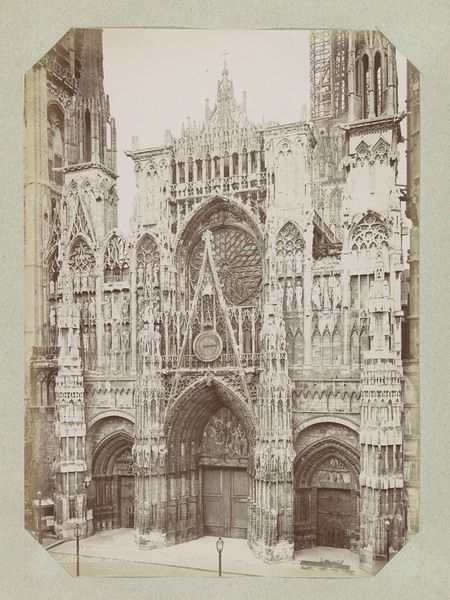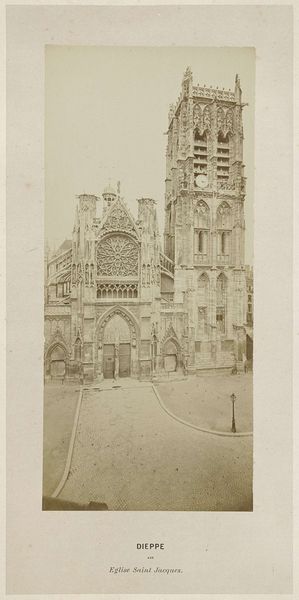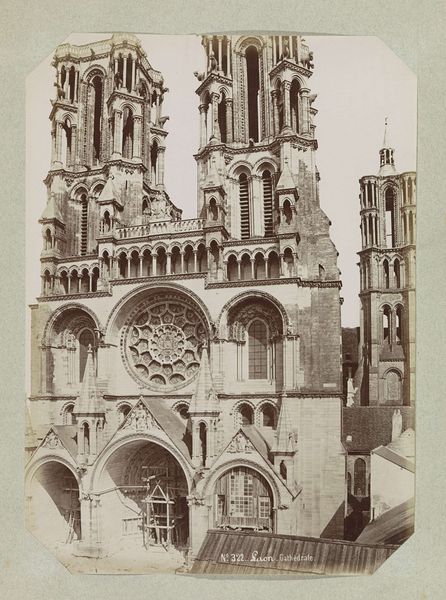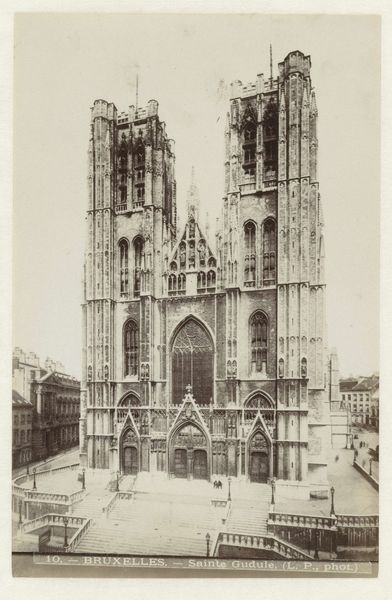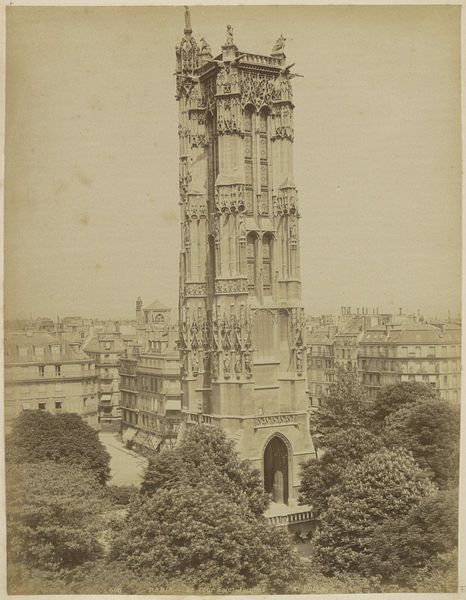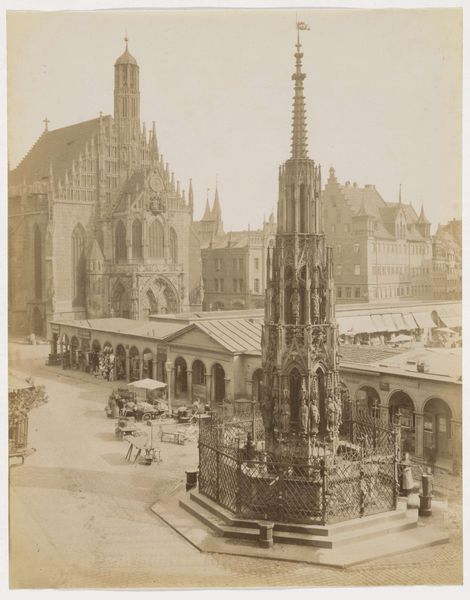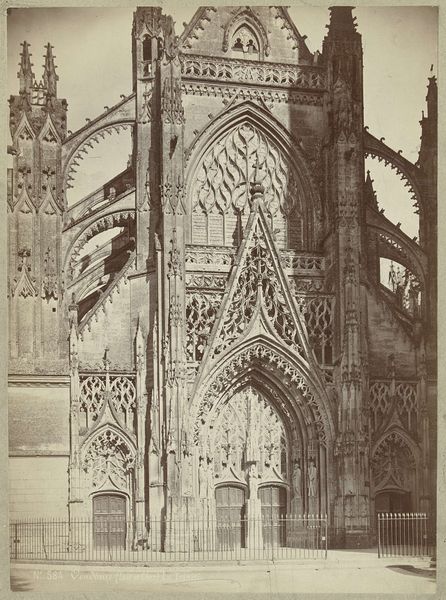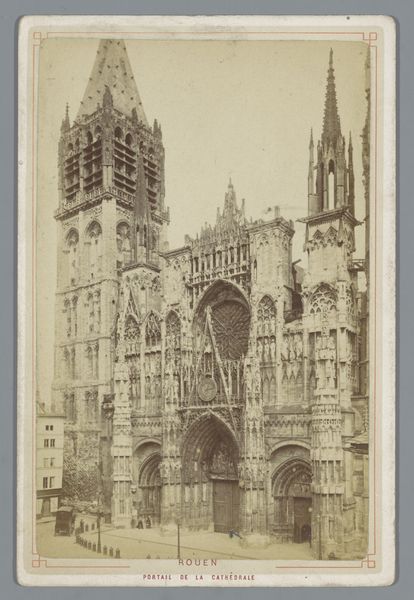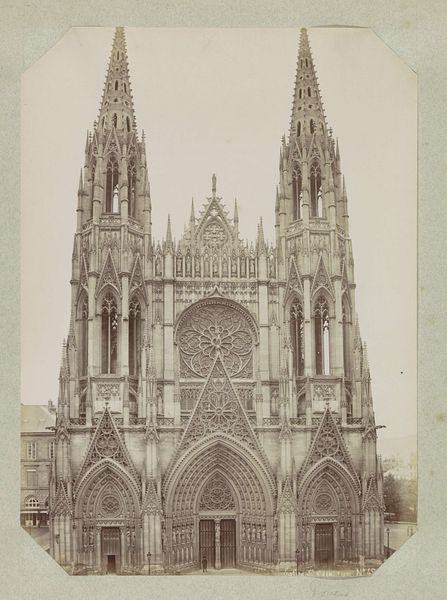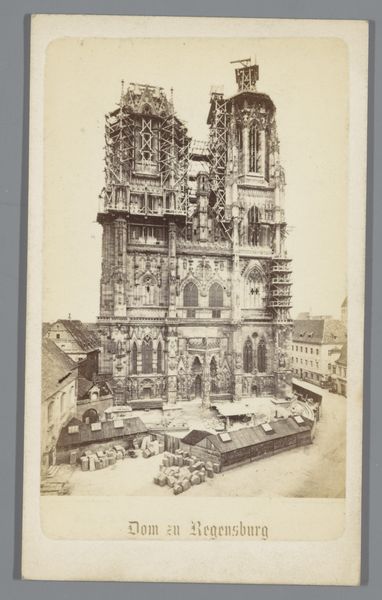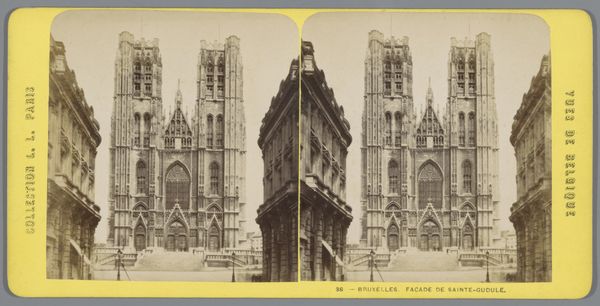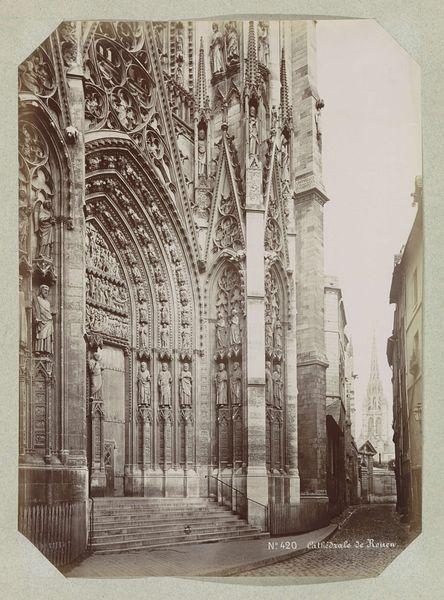
photography, gelatin-silver-print, architecture
#
pictorialism
#
street-photography
#
photography
#
gelatin-silver-print
#
cityscape
#
architecture
#
realism
Dimensions: height 356 mm, width 255 mm
Copyright: Rijks Museum: Open Domain
Editor: This is Mèdéric Mieusement’s photograph, "Kathedraal van Rouen met links de Tour de Beurre," likely taken between 1880 and 1900. It's a gelatin silver print, and I'm immediately drawn to how the immense scale of the cathedral dwarfs the street below. What strikes you about this piece? Curator: Well, as a materialist, I see more than just a pretty picture of a cathedral. I consider the labor and resources that went into both the building itself and the making of this photograph. The cathedral represents immense collective labor and religious power materialized in stone, while the photograph documents a shift in how we represent and consume such grand structures. Think of the silver mining, the glass production for the negatives, the chemist mixing developing solutions. How does photography change our access to these places? Editor: That’s fascinating. So, it's not just about the architectural marvel, but also about the materials and processes used to capture it? Curator: Exactly. We need to consider the context of industrial production. This image wouldn’t exist without advances in photographic technology and the distribution networks that put images like this in people's hands, far removed from Rouen. It’s not just about ‘art’ with a capital ‘A’; it’s about accessible reproduction, labor and industrial change. It encourages thinking about how these things transform cultural experience and the very act of seeing. Do you think photography democratized access? Editor: Possibly. While the photo democratizes access, who owned the cameras and controlled their production is also an important question. It has opened my eyes to different layers to peel back when I’m looking at any kind of visual media! Curator: Precisely, questioning and thinking materially helps us unpack so much of the visible and the less obvious!
Comments
No comments
Be the first to comment and join the conversation on the ultimate creative platform.

